Suicide Prevention in Indigenous Communities: Embracing Cultural Healing Practices
Suicide Prevention in Indigenous Communities: Embracing Cultural Healing Practices
Read Disclaimer
Learn about the importance of incorporating Indigenous cultural healing practices into suicide prevention efforts. Explore the challenges faced by Indigenous communities, the role of traditional healing practices, and how collaboration can improve outcomes.
Introduction:
Suicide is a complex and devastating phenomenon that transcends geographic, cultural, and socioeconomic boundaries, impacting individuals and communities worldwide. However, while suicide affects people from all walks of life, certain groups face significantly higher rates of suicide and self-harm, with Indigenous communities being among the most affected. For Indigenous peoples, suicide represents not only a public health crisis but also a profound loss of cultural knowledge, identity, and resilience.
Indigenous communities, which encompass a diverse array of cultures, languages, and traditions, often contend with a myriad of interconnected factors that contribute to their heightened vulnerability to suicide. These factors include historical trauma stemming from colonization, forced assimilation, and the displacement of Indigenous peoples from their ancestral lands. The devastating consequences of colonization have left a legacy of intergenerational trauma, loss of cultural identity, and socio-economic disparities that continue to impact Indigenous communities today.
In addition to historical trauma, Indigenous communities face systemic barriers to accessing mental health care, including geographic isolation, limited resources, and cultural insensitivity within mainstream services. The interplay of these factors creates a complex and challenging landscape for suicide prevention efforts, requiring a holistic and culturally responsive approach to address the unique needs and strengths of Indigenous peoples.
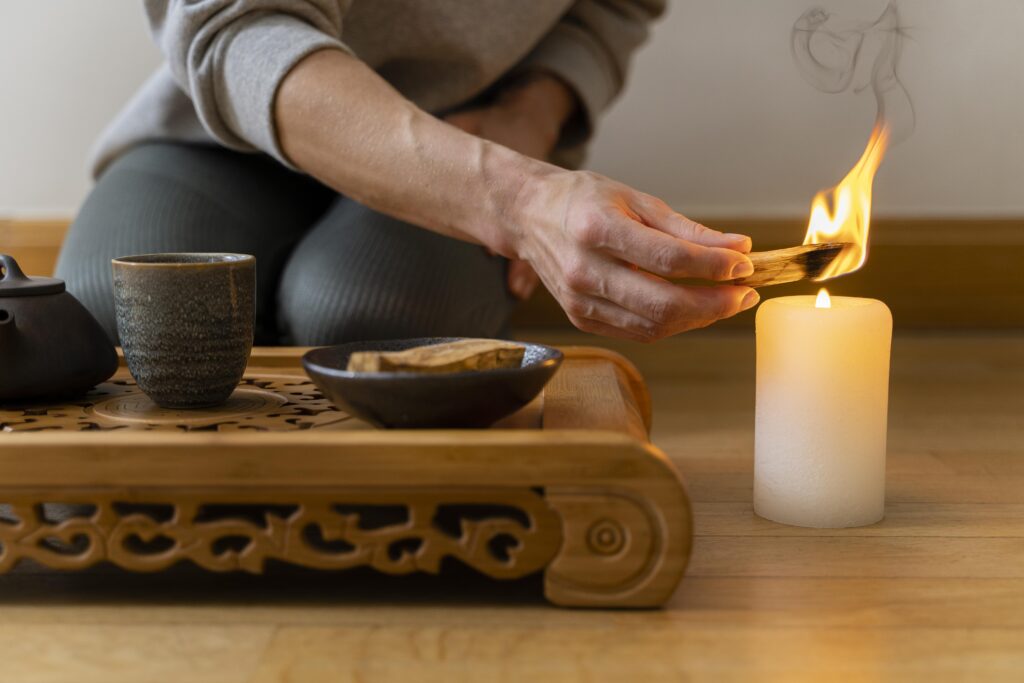
Amidst these challenges, there is a growing recognition of the importance of incorporating Indigenous cultural healing practices into suicide prevention efforts. These practices, rooted in Indigenous knowledge, spirituality, and community resilience, offer a holistic approach to healing and recovery that recognizes the interconnectedness of mental, emotional, physical, and spiritual well-being.
In this comprehensive blog, we will delve into the unique challenges faced by Indigenous communities in addressing suicide, exploring the cultural factors influencing mental health and well-being. We will examine the profound impact of historical trauma, colonization, and cultural loss on Indigenous mental health, highlighting the need for culturally responsive interventions. Additionally, we will explore the role of traditional healing practices, such as healing circles, traditional ceremonies, and land-based healing, in promoting resilience and healing within Indigenous communities.
By elevating Indigenous voices, perspectives, and priorities, we aim to contribute to a deeper understanding of the complexities surrounding suicide prevention in Indigenous communities. Through collaboration, advocacy, and solidarity, we can work towards creating more inclusive and effective suicide prevention strategies that honor the resilience, wisdom, and cultural heritage of Indigenous peoples.
Understanding the Context:
Indigenous communities worldwide grapple with alarmingly high rates of suicide, representing a pressing public health crisis that demands urgent attention and culturally responsive interventions. These communities, characterized by diverse cultures, languages, and traditions, share common experiences of historical trauma, colonization, and systemic marginalization, which contribute to their heightened vulnerability to suicide and self-harm.
Historical trauma, stemming from centuries of colonization, forced assimilation, and displacement, casts a long shadow over Indigenous communities, leaving a legacy of intergenerational trauma, loss, and grief. Indigenous peoples have endured the devastating consequences of colonial policies, including the forced removal from their ancestral lands, the suppression of cultural practices and languages, and the disruption of kinship systems and community structures. These historical injustices have profound and enduring impacts on Indigenous mental health and well-being, contributing to feelings of hopelessness, despair, and disconnection from cultural identity and heritage.
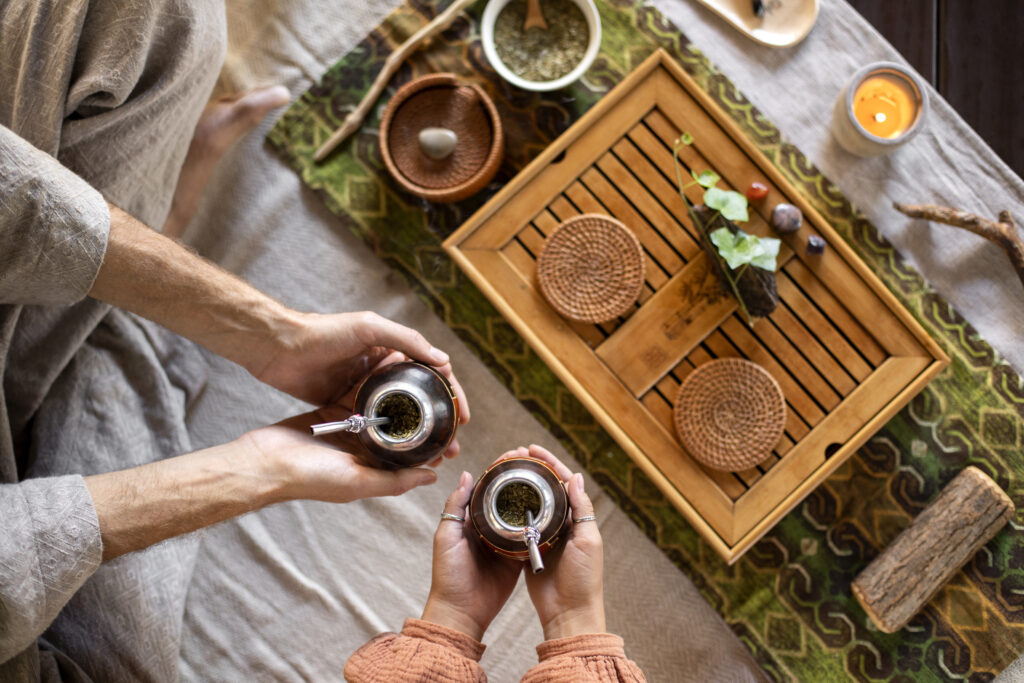
Colonization not only inflicted physical and psychological harm on Indigenous peoples but also perpetuated systemic inequalities and socio-economic disparities that persist to this day. Indigenous communities often face disproportionate levels of poverty, unemployment, inadequate housing, and limited access to essential services such as healthcare and education. These structural barriers exacerbate feelings of marginalization, powerlessness, and despair, further increasing the risk of suicide among Indigenous populations.
In addition to socio-economic challenges, Indigenous communities confront systemic barriers to accessing culturally appropriate mental health care. Geographic isolation, particularly in remote and rural areas, poses significant challenges in accessing services, with many Indigenous communities located far from urban centers where mental health resources are concentrated. Limited resources and funding for mental health services further compound these challenges, resulting in understaffed clinics, long wait times, and inadequate treatment options. Moreover, mainstream mental health services often lack cultural competence and sensitivity, failing to recognize or address the unique needs and cultural contexts of Indigenous clients.
The erosion of traditional cultural practices and knowledge systems exacerbates the risk of suicide among Indigenous populations. As Indigenous communities grapple with the impacts of colonization and globalization, many traditional cultural practices, ceremonies, and languages are at risk of being lost or forgotten. These cultural losses deprive Indigenous individuals of vital sources of resilience, connection, and identity, further undermining their mental health and well-being.
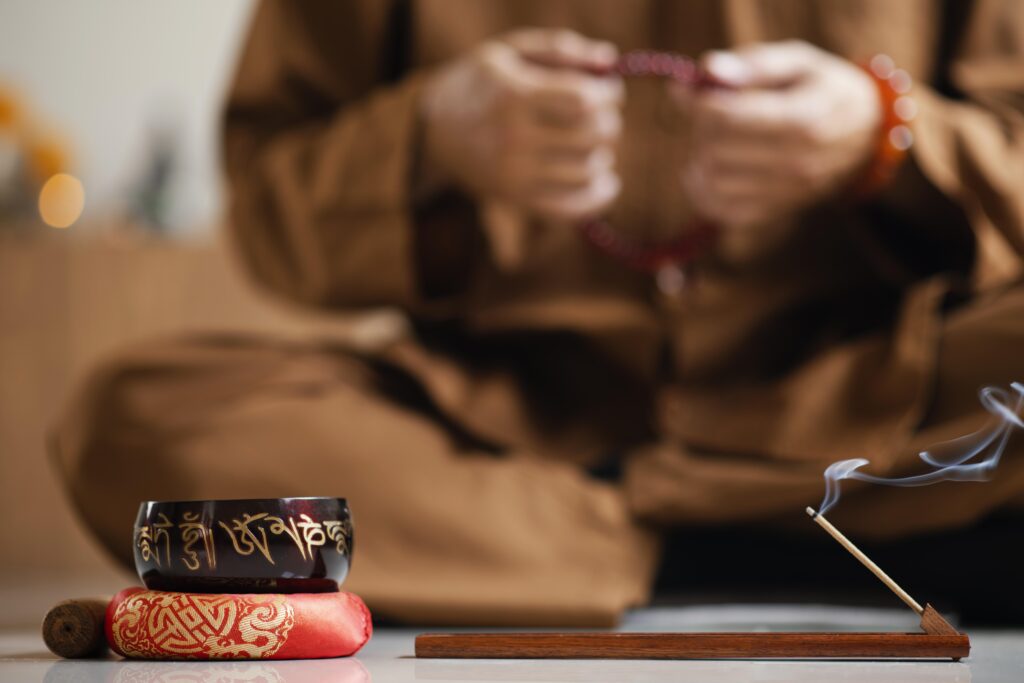
The intergenerational transmission of trauma compounds the challenges faced by Indigenous communities in addressing suicide prevention. Trauma experienced by previous generations can be passed down to subsequent generations through family dynamics, cultural norms, and social structures, perpetuating cycles of suffering and despair. Breaking this cycle requires comprehensive and culturally responsive approaches that address the root causes of intergenerational trauma and promote healing and resilience within Indigenous communities.
In summary, the elevated rates of suicide among Indigenous communities are the result of a complex interplay of historical trauma, colonization, socio-economic disparities, systemic barriers to mental health care, and the erosion of traditional cultural practices. Addressing these challenges requires a holistic and culturally responsive approach that recognizes the unique needs and strengths of Indigenous peoples and empowers communities to reclaim their cultural heritage, resilience, and well-being.
Cultural Healing Practices:
In recognition of the unique needs and strengths of Indigenous communities, suicide prevention efforts increasingly emphasize the importance of incorporating cultural healing practices rooted in Indigenous knowledge, spirituality, and community resilience. These practices offer holistic approaches to healing and recovery that recognize the interconnectedness of mental, emotional, physical, and spiritual well-being. Let’s delve deeper into each of these cultural healing practices:
1. Cultural Reconnection:
Cultural reconnection and revitalization lie at the heart of Indigenous suicide prevention efforts. This involves reclaiming traditional knowledge, languages, ceremonies, and customs that have been suppressed or lost due to centuries of colonization and assimilation policies. By reconnecting with their cultural heritage, Indigenous individuals and communities can strengthen their sense of identity, belonging, and purpose, which serves as a powerful protective factor against suicide and self-harm. Cultural reconnection efforts often involve language revitalization programs, cultural education initiatives, and the revival of traditional ceremonies and practices.

2. Healing Circles and Talking Circles:
Healing circles, also known as talking circles or sharing circles, are ancient Indigenous practices that provide a safe and supportive space for individuals to share their experiences, thoughts, and feelings within a community setting. Guided by cultural elders, healers, or community leaders, these circles emphasize active listening, empathy, and mutual support. Participants are encouraged to speak from the heart, without fear of judgment or stigma, and to offer support and validation to one another. Healing circles promote emotional expression, healing, and connection, fostering resilience and community solidarity in the face of adversity.
3. Traditional Ceremonies and Rituals:
Traditional ceremonies and rituals hold profound significance in Indigenous healing practices, addressing spiritual, emotional, and psychological needs. Ceremonies such as sweat lodges, pipe ceremonies, sunrise ceremonies, and powwows provide opportunities for prayer, reflection, purification, and renewal. These ceremonies connect individuals to their ancestors, the natural world, and the Creator, fostering a sense of connection, purpose, and spiritual strength. Traditional ceremonies and rituals offer sacred spaces for healing, guidance, and transformation, empowering individuals to navigate life’s challenges with resilience and grace.
4. Land-Based Healing:
Land-based healing practices recognize the deep connection between Indigenous peoples and their ancestral lands. Spending time on the land, engaging in traditional activities such as hunting, fishing, gathering, and storytelling, fosters a sense of rootedness, resilience, and spiritual renewal. Land-based healing initiatives encourage individuals to reconnect with the land, honor their ancestors, and restore balance and harmony within themselves and their communities. By embracing land-based healing practices, Indigenous peoples reclaim their cultural heritage, strengthen their relationship with the natural world, and promote holistic well-being.
5. Traditional Healing Modalities:
Traditional healing modalities, such as herbal medicine, smudging, drumming, and ceremony, are integral components of Indigenous healing practices. These modalities address physical, emotional, and spiritual imbalances, promoting holistic well-being and healing. Traditional healers, known as medicine people or shamans, play a central role in facilitating healing and restoring harmony within individuals and communities. Through the use of sacred herbs, sacred songs, and sacred ceremonies, traditional healers offer guidance, support, and spiritual healing, empowering individuals to reclaim their health and vitality.
In summary, cultural healing practices rooted in Indigenous knowledge, spirituality, and community resilience offer powerful avenues for healing and recovery in Indigenous communities. By embracing cultural reconnection, healing circles, traditional ceremonies, land-based healing, and traditional healing modalities, Indigenous peoples reclaim their cultural heritage, strengthen their resilience, and foster holistic well-being. These cultural healing practices not only address the root causes of mental and emotional distress but also promote healing, connection, and empowerment within Indigenous communities.
Challenges and Opportunities:
Despite the significant benefits of cultural healing practices in suicide prevention, Indigenous communities encounter numerous challenges in accessing and integrating these practices into mainstream mental health care systems. These challenges stem from systemic barriers, ongoing colonization, and cultural appropriation, which hinder the implementation of culturally appropriate interventions. Let’s explore these challenges in more detail:
1. Structural Barriers:
Indigenous communities face structural barriers that impede their access to culturally appropriate mental health care services. These barriers include limited funding and resources for Indigenous-specific programs, inadequate infrastructure in remote and rural areas, and a lack of trained professionals with cultural competence. As a result, many Indigenous individuals and communities struggle to access timely and culturally responsive support for mental health issues, including suicide prevention.
2. Cultural Competence:
Another challenge lies in the lack of cultural competence among mainstream mental health service providers. Many mental health professionals may not have the necessary understanding of Indigenous cultures, worldviews, and healing practices to effectively engage with Indigenous clients. This lack of cultural competence can lead to misunderstandings, misdiagnoses, and ineffective treatment approaches, further alienating Indigenous individuals from mental health care services.
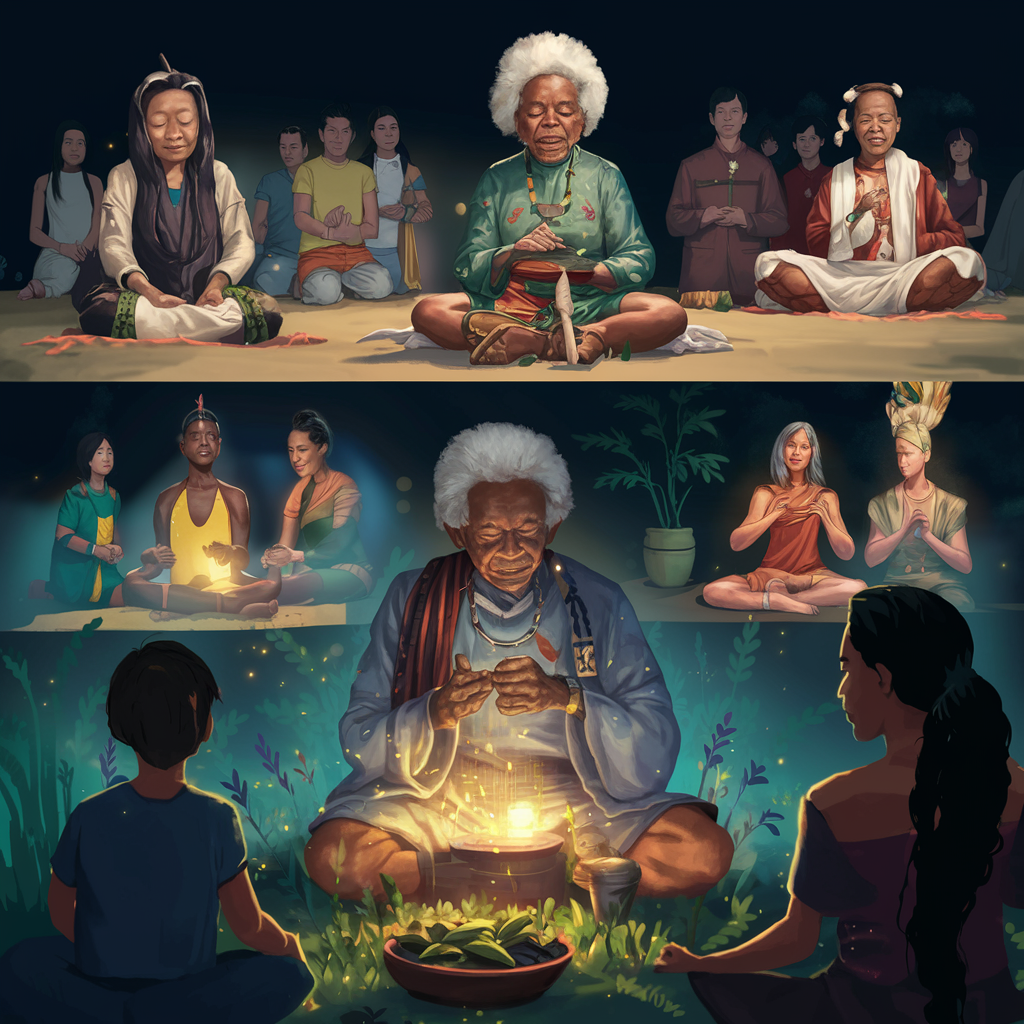
3. Jurisdictional Disputes:
Jurisdictional disputes between Indigenous communities, governments, and health authorities can also pose challenges to the implementation of culturally appropriate suicide prevention initiatives. Conflicting mandates, funding arrangements, and bureaucratic processes can create barriers to collaboration and coordination between stakeholders, hindering the development and delivery of effective programs and services.
4. Colonization and Cultural Appropriation:
Ongoing colonization and cultural appropriation pose significant threats to Indigenous knowledge systems, practices, and cultural sovereignty. The commodification and misrepresentation of Indigenous healing practices by non-Indigenous individuals and organizations undermine the integrity and authenticity of these practices, eroding trust and perpetuating harm within Indigenous communities. Moreover, the marginalization and exploitation of Indigenous cultures contribute to feelings of cultural disconnection and loss, exacerbating mental health issues and suicide risk.
Despite these challenges, there are also opportunities for collaboration and partnership between Indigenous communities, governments, non-profit organizations, and academic institutions to address these issues and promote Indigenous-led solutions to suicide prevention. By prioritizing Indigenous voices, perspectives, and priorities, and supporting community-driven initiatives, we can create more inclusive and effective suicide prevention strategies that honor the resilience, wisdom, and cultural heritage of Indigenous peoples.
Partnerships between Indigenous communities and external stakeholders can leverage resources, expertise, and networks to overcome structural barriers and promote culturally responsive approaches to suicide prevention. Government agencies can provide funding and support for Indigenous-led programs and initiatives, while non-profit organizations can offer technical assistance, training, and capacity-building opportunities. Academic institutions can collaborate with Indigenous communities to conduct research, evaluation, and knowledge exchange activities, ensuring that suicide prevention efforts are informed by Indigenous perspectives and priorities.
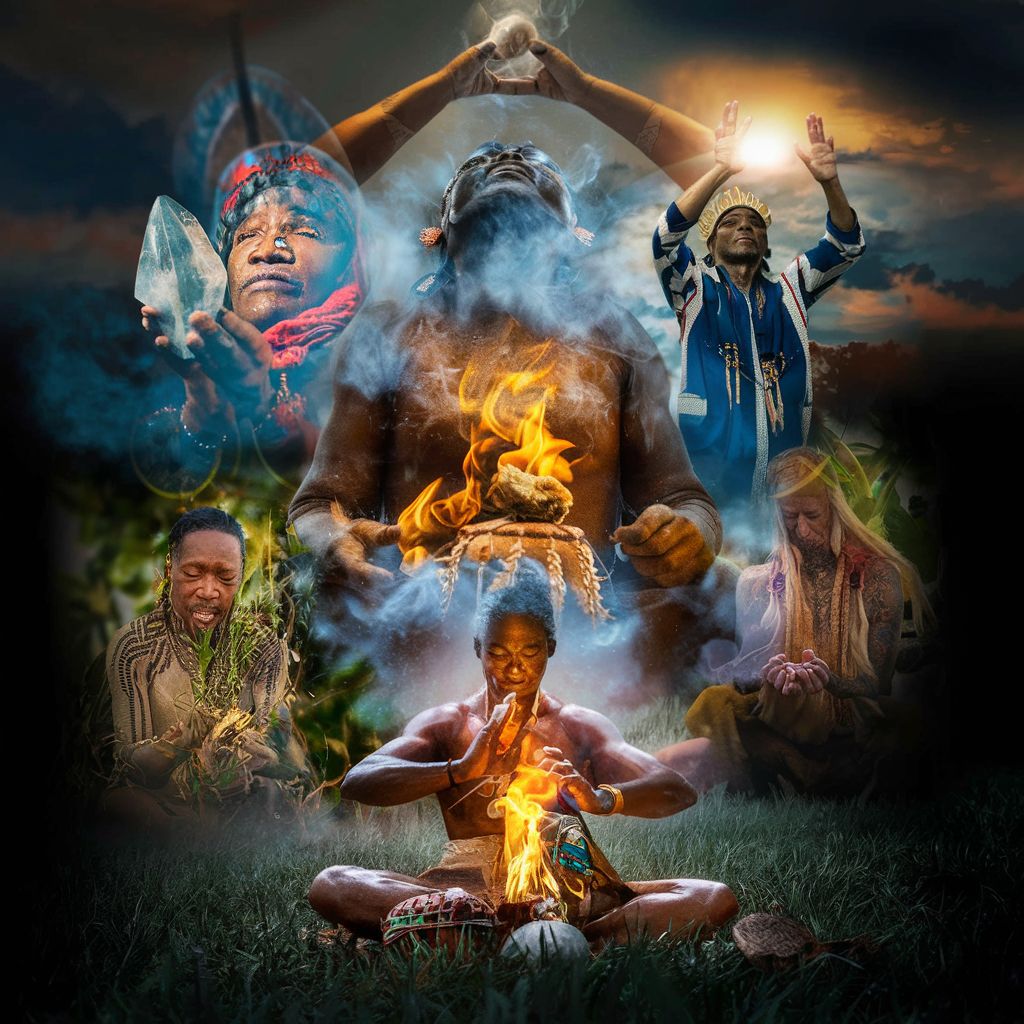
Furthermore, initiatives aimed at decolonizing mental health care systems and addressing cultural appropriation can help create environments that are respectful, inclusive, and culturally safe for Indigenous clients. This involves acknowledging the impact of colonization on Indigenous mental health, promoting cultural humility and sensitivity among mental health professionals, and supporting Indigenous-led initiatives to reclaim and revitalize traditional healing practices.
In summary, while Indigenous communities face significant challenges in accessing and integrating cultural healing practices into mainstream mental health care systems, there are opportunities for collaboration and partnership to address these issues and promote Indigenous-led solutions to suicide prevention. By prioritizing Indigenous voices, perspectives, and priorities, and supporting community-driven initiatives, we can create more inclusive and effective suicide prevention strategies that honor the resilience, wisdom, and cultural heritage of Indigenous peoples.
Conclusion:
In conclusion, suicide prevention in Indigenous communities necessitates a multifaceted approach that acknowledges the complex interplay of historical trauma, cultural resilience, and systemic inequities. Incorporating Indigenous cultural healing practices into suicide prevention efforts is paramount for addressing the unique needs and strengths of Indigenous peoples. By promoting cultural reconnection, fostering healing circles, revitalizing traditional ceremonies, embracing land-based healing, and honoring traditional healing modalities, Indigenous communities can reclaim their cultural heritage, strengthen their resilience, and foster holistic well-being.
However, addressing the challenges faced by Indigenous communities in accessing and integrating cultural healing practices into mainstream mental health care systems requires collaborative efforts and systemic change. Governments, non-profit organizations, and academic institutions must prioritize Indigenous-led solutions, provide adequate funding and resources, and support community-driven initiatives that center Indigenous voices, perspectives, and priorities. By working together to dismantle colonial barriers, combat cultural appropriation, and promote cultural safety and humility, we can create more inclusive and effective suicide prevention strategies that honor the resilience, wisdom, and cultural heritage of Indigenous peoples.
FAQs with Answers:
1. Q: What factors contribute to the high rates of suicide in Indigenous communities?
A: Historical trauma, colonization, cultural loss, and systemic inequities contribute to the heightened vulnerability of Indigenous communities to suicide.
2. Q: How can cultural healing practices help prevent suicide in Indigenous communities?
A: Cultural healing practices promote resilience, cultural pride, and holistic well-being by fostering cultural reconnection, facilitating healing circles, revitalizing traditional ceremonies, embracing land-based healing, and honoring traditional healing modalities.
3. Q: What are some examples of cultural healing practices used in Indigenous suicide prevention efforts?
A: Examples include traditional ceremonies like sweat lodges and powwows, healing circles or talking circles, land-based healing initiatives, and the use of traditional healing modalities such as herbal medicine and drumming.
4. Q: What challenges do Indigenous communities face in accessing cultural healing practices for suicide prevention?
A: Structural barriers, funding constraints, lack of cultural competence among service providers, and ongoing colonization and cultural appropriation pose challenges to accessing and integrating cultural healing practices into mainstream mental health care systems.
5. Q: How can collaboration between Indigenous communities and external stakeholders improve suicide prevention efforts?
A: Collaboration can lead to more inclusive and effective suicide prevention strategies that prioritize Indigenous voices, perspectives, and priorities, and support community-driven initiatives that honor cultural resilience and heritage.
6. Q: What role do traditional healers play in Indigenous suicide prevention?
A: Traditional healers, or medicine people, play a central role in facilitating healing and restoring harmony within individuals and communities by providing spiritual guidance, herbal medicine, and ceremonial rituals.
7. Q: How can individuals support suicide prevention efforts in Indigenous communities?
A: Individuals can support suicide prevention efforts by advocating for culturally responsive mental health services, learning about Indigenous history and culture, supporting Indigenous-led initiatives, and promoting cultural humility and respect.
8. Q: What impact does colonization have on Indigenous mental health and well-being?
A: Colonization has had profound effects on Indigenous mental health, including the intergenerational transmission of trauma, loss of cultural identity, and systemic inequities in access to resources and opportunities.
9. Q: How can Indigenous youth be supported in suicide prevention efforts?
A: Supporting Indigenous youth requires providing culturally relevant education, creating safe spaces for expression and connection, fostering positive identity development, and promoting access to mental health services and cultural mentors.
10. Q: What are some signs that an Indigenous individual may be at risk of suicide?
A: Signs may include expressions of hopelessness, increased social withdrawal, changes in eating or sleeping patterns, engaging in self-harm behaviors, and making statements about death or dying.
11. Q: What resources are available for Indigenous communities struggling with suicide prevention?
A: Resources include Indigenous-led organizations, mental health services tailored to Indigenous populations, crisis hotlines, and cultural healing programs offered by community elders and healers.
12. Q: How can historical trauma impact Indigenous mental health and suicide risk?
A: Historical trauma, stemming from colonization, forced assimilation, and systemic oppression, can lead to feelings of loss, grief, and intergenerational trauma that contribute to mental health challenges and suicide risk.
13. Q: What role do land-based healing practices play in Indigenous suicide prevention?
A: Land-based healing practices reconnect individuals to their ancestral lands, promote cultural identity and resilience, and provide opportunities for spiritual renewal and healing.
14. Q: How can non-Indigenous individuals support Indigenous suicide prevention efforts?
A: Non-Indigenous individuals can support Indigenous suicide prevention efforts by listening to and amplifying Indigenous voices, advocating for systemic change, educating themselves about Indigenous history and culture, and engaging in allyship and solidarity.
15. Q: What cultural protocols should be observed when engaging with Indigenous healing practices?
A: Observing cultural protocols involves seeking permission, respecting sacred spaces and ceremonies, listening attentively, following the guidance of elders or knowledge keepers, and offering gratitude and reciprocity for the teachings received.
16. Q: What are some culturally appropriate ways to address suicide prevention in Indigenous communities?
A: Culturally appropriate approaches may include integrating traditional healing practices into mental health care, providing culturally relevant education and training, collaborating with Indigenous elders and healers, and honoring Indigenous cultural protocols and values.
17. Q: How can Indigenous spirituality support suicide prevention efforts?
A: Indigenous spirituality provides a framework for healing, resilience, and connection to community, land, and culture. Spiritual practices such as prayer, ceremony, and connection to ancestors offer strength and guidance in times of crisis.
18. Q: What role does storytelling play in Indigenous suicide prevention?
A: Storytelling is a powerful tool for healing, sharing knowledge, and building connections within Indigenous communities. Sharing personal experiences, cultural teachings, and resilience stories can promote healing and reduce stigma around mental health.
19. Q: How can historical trauma be addressed in suicide prevention efforts?
A: Addressing historical trauma involves acknowledging the impact of colonization and systemic oppression on Indigenous communities, promoting healing and reconciliation, and empowering communities to reclaim their cultural heritage and resilience.
20. Q: What are some promising practices in Indigenous suicide prevention?
A: Promising practices may include community-driven initiatives, culturally adapted mental health programs, youth empowerment programs, land-based healing initiatives, and collaborative partnerships between Indigenous communities and external stakeholders.
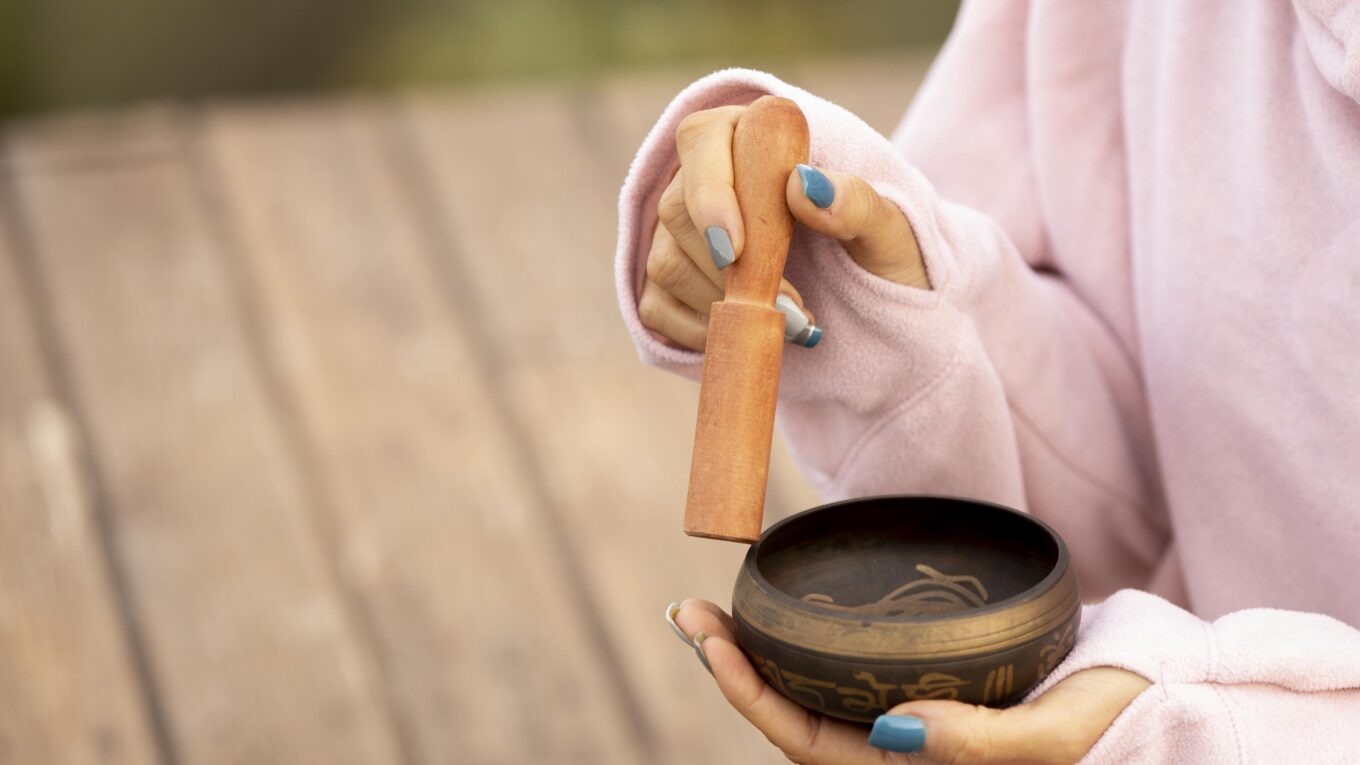
Thanks for sharing. I read many of your blog posts, cool, your blog is very good.
Your article helped me a lot, is there any more related content? Thanks!
Thank you for your sharing. I am worried that I lack creative ideas. It is your article that makes me full of hope. Thank you. But, I have a question, can you help me?
Thanks for sharing. I read many of your blog posts, cool, your blog is very good.
Thank you for your sharing. I am worried that I lack creative ideas. It is your article that makes me full of hope. Thank you. But, I have a question, can you help me?
Thank you for your sharing. I am worried that I lack creative ideas. It is your article that makes me full of hope. Thank you. But, I have a question, can you help me?
Thanks for sharing. I read many of your blog posts, cool, your blog is very good.
Thanks for sharing. I read many of your blog posts, cool, your blog is very good.
Can you be more specific about the content of your article? After reading it, I still have some doubts. Hope you can help me.
Thanks for sharing. I read many of your blog posts, cool, your blog is very good.
Thanks for sharing. I read many of your blog posts, cool, your blog is very good.
Thank you for your sharing. I am worried that I lack creative ideas. It is your article that makes me full of hope. Thank you. But, I have a question, can you help me?
Can you be more specific about the content of your article? After reading it, I still have some doubts. Hope you can help me.
Thank you for your sharing. I am worried that I lack creative ideas. It is your article that makes me full of hope. Thank you. But, I have a question, can you help me?
займ денег онлайн займ денег онлайн
Thank you for your sharing. I am worried that I lack creative ideas. It is your article that makes me full of hope. Thank you. But, I have a question, can you help me?
Thank you for your sharing. I am worried that I lack creative ideas. It is your article that makes me full of hope. Thank you. But, I have a question, can you help me?
Can you be more specific about the content of your article? After reading it, I still have some doubts. Hope you can help me.
Thanks for sharing. I read many of your blog posts, cool, your blog is very good.
Thanks for sharing. I read many of your blog posts, cool, your blog is very good.
Your point of view caught my eye and was very interesting. Thanks. I have a question for you.
Can you be more specific about the content of your article? After reading it, I still have some doubts. Hope you can help me. https://accounts.binance.com/hu/register-person?ref=IQY5TET4
paypal casino canada
References:
working.altervista.org
Sun International proudly supports responsible gambling.
Read about what is happening at Sun International casinos.
From lucky wins to jackpot payouts, our winners have taken home as much as R10-million at
Sun International casinos. Whether you prefer the excitement of Blackjack, the thrill of Roulette
or the intensity of Poker, you won’t be disappointed
when you walk into a Sun International casino.
The Sun MVG loyalty programme rewards you with Casino and Leisure Points when you play or stay at any one of our casinos or hotels countrywide.
The casino, set west of the city, is 56,000 square feet large.
The charming Tuscany village themed Montecasino is located in Fourways, north of Johannesburg.
It owns an unreasonable number of slot machines. The
Emerald casino Resort sits on the border of the Vaal River, in Vanderbijlpark.
” section, where the “Install application for mobile” is located.
References:
ufo9
online casino uk paypal
References:
https://jobs.askpyramid.com/companies/online-roulette-with-paypal-best-paypal-casinos-for-real-money
casino mit paypal einzahlung
References:
https://diseotuweb-w9a.com/employer/worlds-newest-casinos-in-2025-grand-opening-information-and-casinos-coming-soon/
online american casinos that accept paypal
References:
https://jobsharmony.com
Der neue deutsche Glücksspielstaatsvertrag von 2021 wirbelt den Markt ganz schön durcheinander.
Das ist einer der Gründe, weshalb wir keine Online Casinos mit deutscher Lizenz in unseren Bestenlisten haben. Mit der folgenden einfachen Anleitung findet ihr souverän die besten Casinos für Deutschland online!
Dabei könnt ihr tausende Qualitätsspiele von absoluten Welt-Providern wie
Play’n go oder NetEnt erwarten. Was euch im Einzelnen erwartet,
lest ihr in den Platincasino Erfahrungen von OSC!
Auf unseriösen Casino Plattformen zu spielen, kann schwerwiegende Folgen haben, die weit über den finanziellen Verlust hinausgehen. In den 70er und 80er Jahren kam das Videopoker
auf, mit dem du dieses Kartenspiel auch alleine spielen kann.
Blackjack kannst du auch im Live Casino deiner Online Spielbank spielen, wo du
in Echtzeit gegen einen echten Dealer dein Können beweisen kannst.
Durch Bonusspiele, Freispiele und progressive Jackpots bieten moderne Online Spielautomaten oft zusätzliche
Spannung und Gewinnmöglichkeiten.
References:
https://onlinegamblingcasino.s3.amazonaws.com/iwild casino 20 free spins.html
Auch für regelmäßige Spieler gibt es ein Level-System mit
Boni, Cashback und Freispielen, das für zusätzliche Motivation sorgt.
Besonders hervorzuheben ist die Auswahl an hauseigenen Stake-Originalspielen, die
exklusiv auf der Plattform verfügbar sind und durch ihre einfache
Bedienung und faire Gewinnchancen überzeugen. Zudem fallen persönliche Informationen kaum an, weshalb ihr anonym spielen könnt und keine aufwendigen KYC-Prozesse durchlaufen müsst.
Meist gibt es einen Willkommensbonus, der eure erste Einzahlung aufstockt, oder
Freispiele für ausgewählte Automaten. Damit spart ihr
einiges an Gebühren, behaltet jederzeit den Überblick über eure
Finanzen und könnt oftmals auch kostenlos im Casino spielen.
Aktuell können Sie sich in nahezu jedem Crypto Casino einen Neukundenbonus sichern, der nicht selten üppige Belohnungen für Ihre ersten Geldtransfers bereithält.
Selbstverständlich stehen Krypto Casinos den traditionellen Anbietern hinsichtlich der Spieleauswahl, Promotionen und innovativen Features in nichts nach.
Zahlungen mit Kryptowährungen bieten ein hohes Maß
an Anonymität, da weder personenbezogene Informationen, noch
Bankdaten mit dem Krypto Casino geteilt werden müssen. Reine Krypto Casinos bieten ausschließlich
Transaktionen mit Kryptowährung an und akzeptieren grundsätzlich keine Fiat-Währungen wie
den Euro.
References:
https://s3.amazonaws.com/onlinegamblingcasino/greatwin casino.html
References:
Anavar gains before and after
References:
http://www.saludcapital.gov.co
References:
Anavar woman before after
References:
pandora.nla.gov.au
References:
Casino acura
References:
able2know.org
References:
Holland casino scheveningen
References:
https://king-bookmark.stream
References:
Blackjack online for money
References:
banks-magnusson.mdwrite.net
References:
Casino texas
References:
techou.jp
best legal bodybuilding supplement
References:
https://crane-ladefoged-2.federatedjournals.com/buy-dianabol-10mg-x-100-tabs-online-1768643038
clomid and steroids
References:
https://41-4lcpj.укр